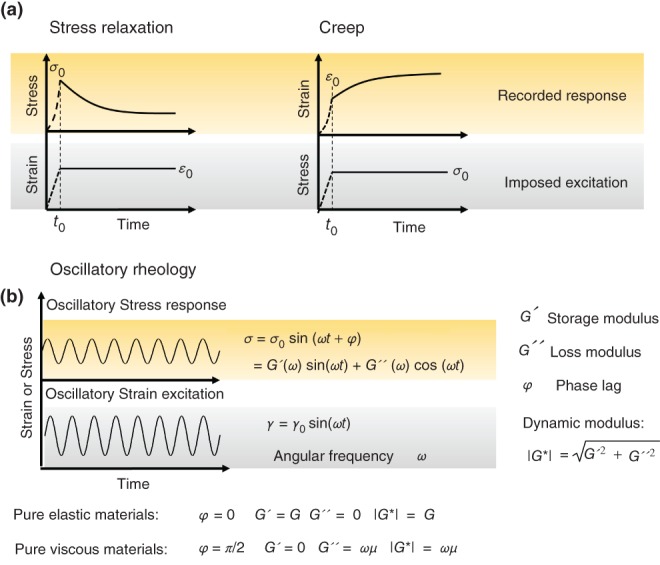Figure 3.

Common loading conditions for measuring time-dependent mechanical properties. (a) Typical rheological characterization incorporates measuring the temporal evolution of strain under application of a constant stress (creep) or the temporal evolution of stress under application of a constant strain (stress-relaxation). (b) Oscillatory techniques are another method of characterizing the viscoelastic properties of materials where normally a sinusoidal strain is applied and the cyclic stress response is monitored. In this approach the timescale of the test is defined by the frequency of oscillation ω. By observing material response at a range of frequencies the relative contribution of elastic (indicated by storage modulus G′) and viscous (indicated by loss modulus G″) responses can be characterized at different timescales. The dynamic modulus G* is the indicator of overall viscoelastic behavior. Oscillatory tests can reveal a set of material viscoelastic responses over specific span of frequencies (timescales).
